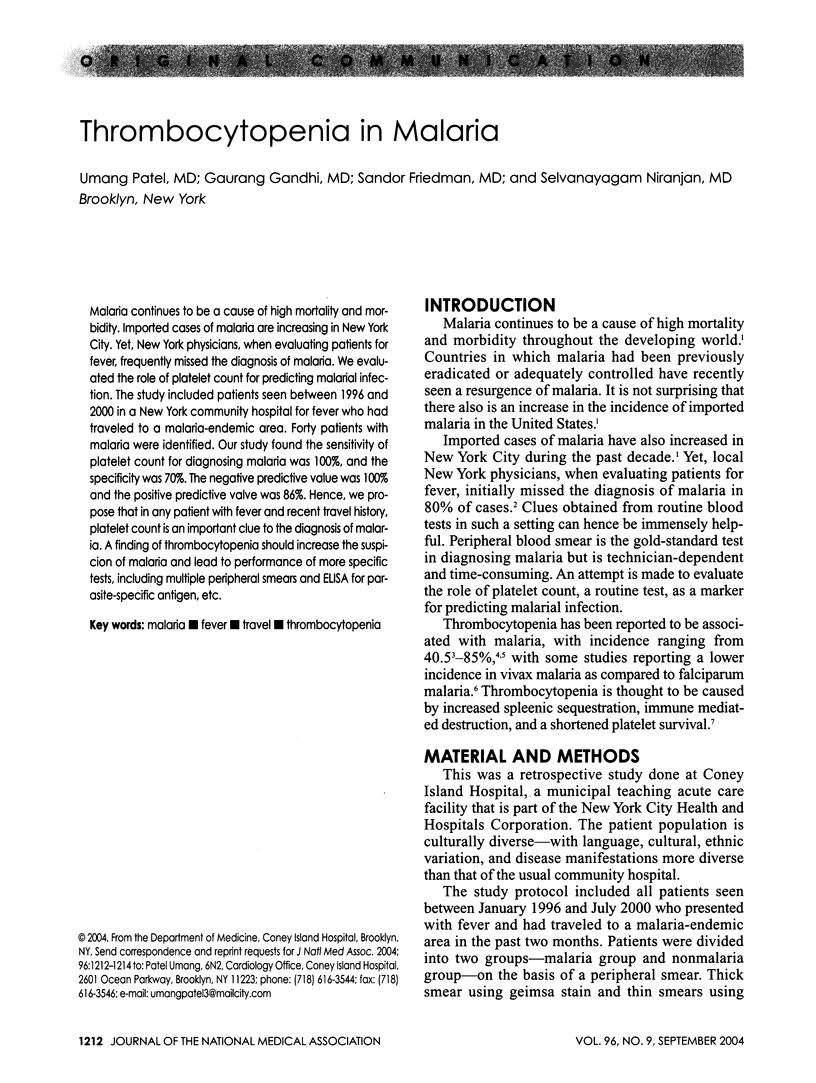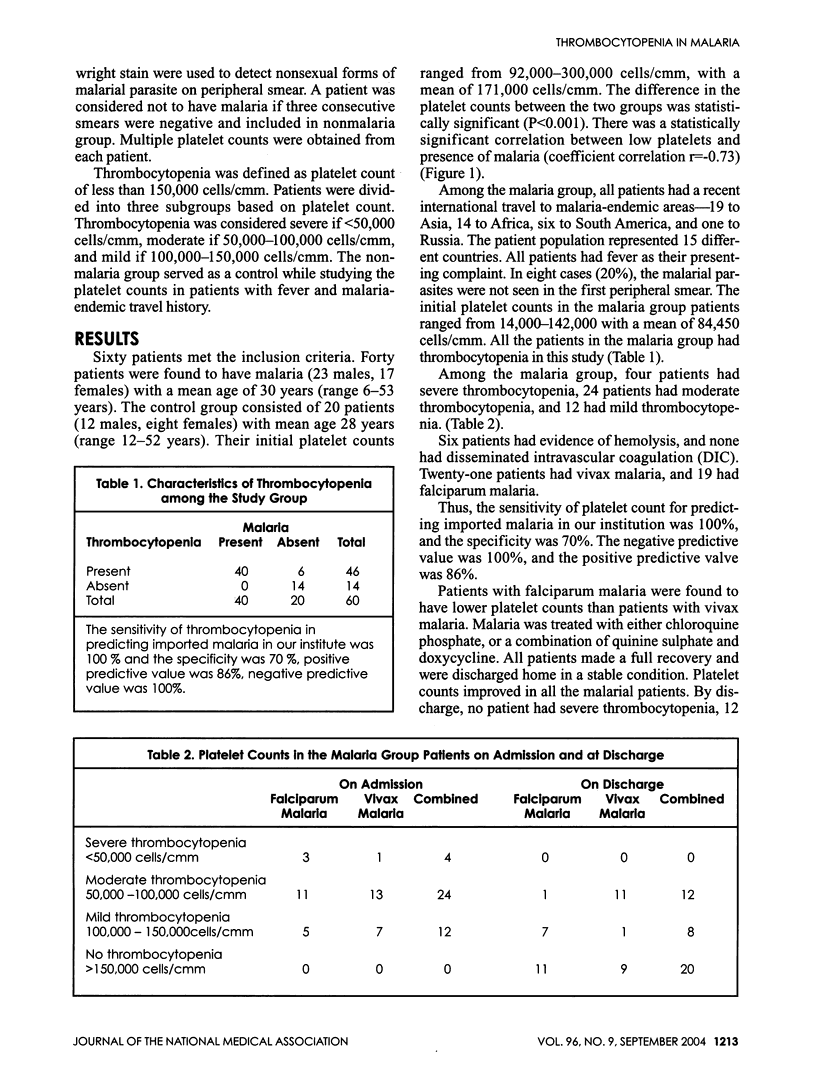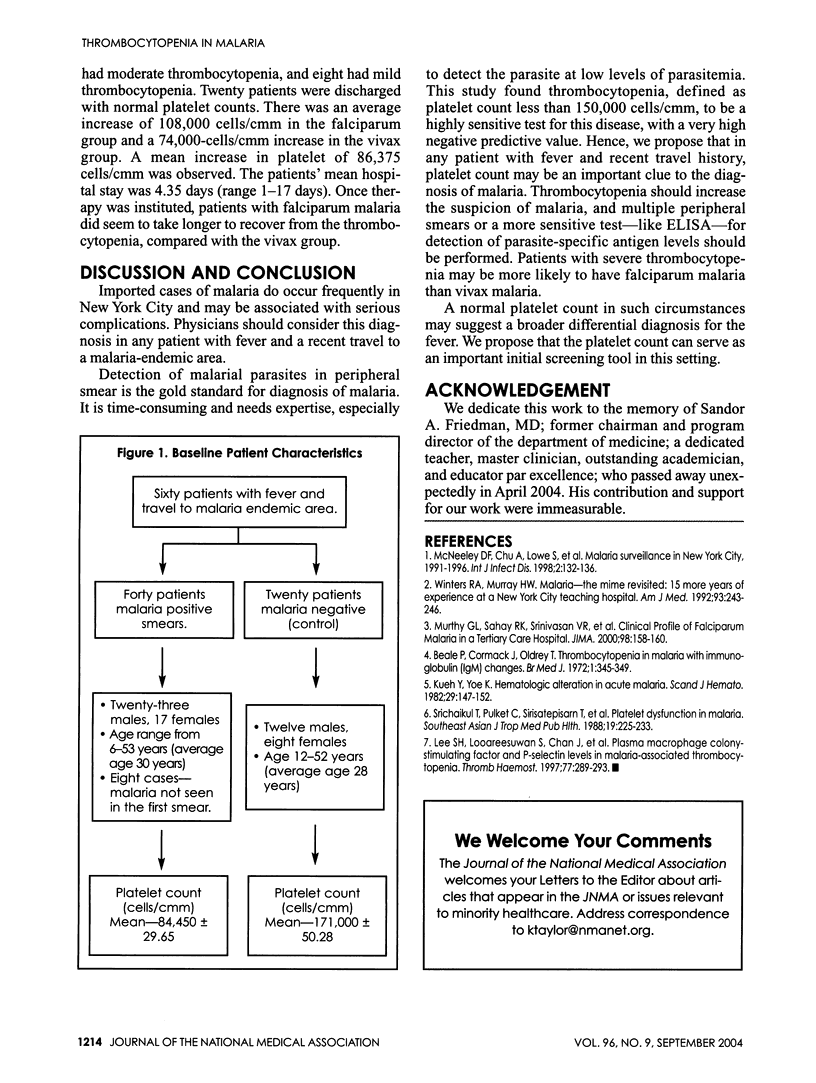Abstract
Malaria continues to be a cause of high mortality and morbidity. Imported cases of malaria are increasing in New York City. Yet, New York physicians, when evaluating patients for fever, frequently missed the diagnosis of malaria. We evaluated the role of platelet count for predicting malarial infection. The study included patients seen between 1996 and 2000 in a New York community hospital for fever who had traveled to a malaria-endemic area. Forty patients with malaria were identified. Our study found the sensitivity of platelet count for diagnosing malaria was 100%, and the specificity was 70%. The negative predictive value was 100% and the positive predictive valve was 86%. Hence, we propose that in any patient with fever and recent travel history, platelet count is an important clue to the diagnosis of malaria. A finding of thrombocytopenia should increase the suspicion of malaria and lead to performance of more specific tests, including multiple peripheral smears and ELISA for parasite-specific antigen, etc.
Full text
PDF


Selected References
These references are in PubMed. This may not be the complete list of references from this article.
- Beale P. J., Cormack J. D., Oldrey T. B. Thrombocytopenia in malaria with immunoglobulin (IgM) changes. Br Med J. 1972 Feb 5;1(5796):345–349. doi: 10.1136/bmj.1.5796.345. [DOI] [PMC free article] [PubMed] [Google Scholar]
- Kueh Y. K., Yeo K. L. Haematological alterations in acute malaria. Scand J Haematol. 1982 Aug;29(2):147–152. doi: 10.1111/j.1600-0609.1982.tb00576.x. [DOI] [PubMed] [Google Scholar]
- Lee S. H., Looareesuwan S., Chan J., Wilairatana P., Vanijanonta S., Chong S. M., Chong B. H. Plasma macrophage colony-stimulating factor and P-selectin levels in malaria-associated thrombocytopenia. Thromb Haemost. 1997 Feb;77(2):289–293. [PubMed] [Google Scholar]
- McNeeley D. F., Chu A., Lowe S., Layton M. Malaria surveillance in New York City: 1991-1996. Int J Infect Dis. 1998 Jan-Mar;2(3):132–136. doi: 10.1016/s1201-9712(98)90114-x. [DOI] [PubMed] [Google Scholar]
- Murthy G. L., Sahay R. K., Srinivasan V. R., Upadhaya A. C., Shantaram V., Gayatri K. Clinical profile of falciparum malaria in a tertiary care hospital. J Indian Med Assoc. 2000 Apr;98(4):160-2, 169. [PubMed] [Google Scholar]
- Srichaikul T., Pulket C., Sirisatepisarn T., Prayoonwiwat W. Platelet dysfunction in malaria. Southeast Asian J Trop Med Public Health. 1988 Jun;19(2):225–233. [PubMed] [Google Scholar]
- Winters R. A., Murray H. W. Malaria--the mime revisited: fifteen more years of experience at a New York City teaching hospital. Am J Med. 1992 Sep;93(3):243–246. doi: 10.1016/0002-9343(92)90228-4. [DOI] [PubMed] [Google Scholar]


